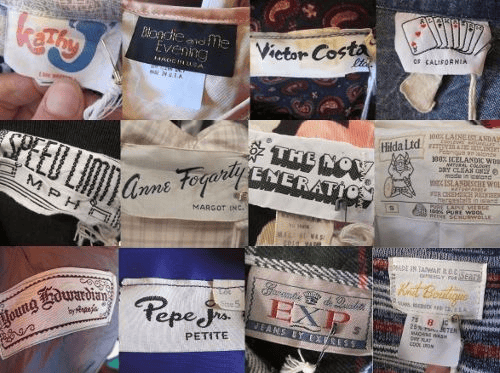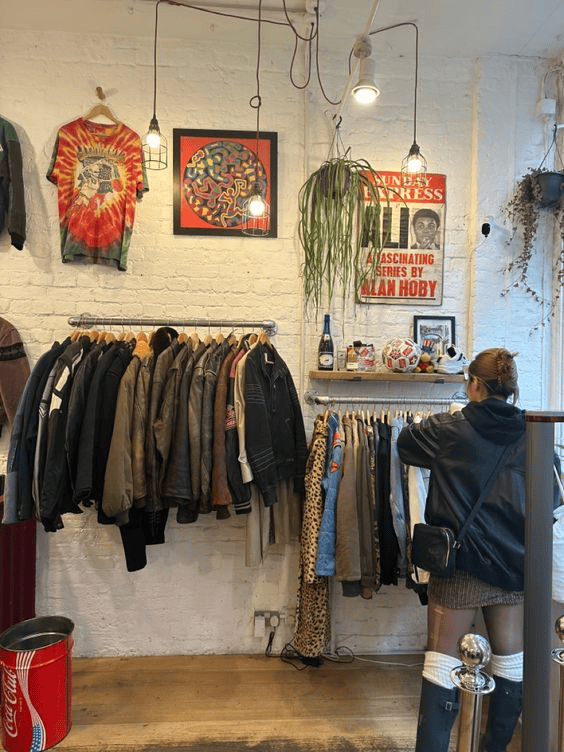Got clothes you’re ready to part with? Ever wonder if a thrift store will buy them? Well, I’ve got you covered.
This blog spills the secrets of what to expect when selling your second-hand gems! From what stores are looking for to how the process works, you’ll find all the tips to cash in on your closet clear-out.
Ready to turn your wardrobe into cash? Keep reading and discover whether thrift stores accept your pre-loved clothes!

Key Takeaway
- Thrift stores typically accept trendy, timeless, and well-known brands, favoring items in good or excellent condition. Popular brands like Urban Outfitters and Levi’s tend to sell quickly.
- Condition, brand, and store inventory play major roles in whether your clothes get accepted. Items in high demand and matching upcoming seasonal trends are more likely to be taken.
- Thrift stores often offer store credit or cash, with some offering higher value for store credit. They also take a commission, so knowing the fees beforehand is important.
- Selling in-store provides quick, hassle-free transactions but lower payouts. Online platforms offer more control and potentially higher profits but require more effort and time investment.
What Types of Clothes Do Thrift Stores Accept?

Source: forbes.com
Selling your clothes to a thrift store can feel like a mystery sometimes – what will they take, and what will they pass on? Based on experience, thrift stores usually accept specific things, so check these out to know exactly what to bring in.
From everyday wear to high-end pieces, here are what catches their eye and how to make the most of your closet clear-out:
Clothing Items Thrift Stores Look For
Thrift stores want clothes that people are excited to buy.
Think about a 1980s Edwardian blouse, vintage pieces for men, or even adorable baby outfits. They often look for styles that are still trendy or classic pieces that never go out of fashion. So, if it’s something you’d still wear today, it’s likely to be accepted.
Good Condition vs. Excellent Condition: What Thrift Stores Expect
Condition matters! Thrift stores will not take items with stains, rips, or heavy wear but will accept gently used items.
“Good condition” means it’s been worn but still looks great, while “excellent condition” is like-new or barely used. The better the condition, the more likely they’ll take it – and maybe even offer a higher price!
Will They Accept Your Vintage Items, Designer Clothes, and Luxury Items?

Credits: @sammydvintage / Pinterest
Yes, thrift stores might take your vintage and designer pieces, but it depends.
Stores love unique, high-quality items, especially if they’re trendy or timeless. If you have something luxury or vintage, call ahead and check if the store specializes in these items. Some might even give you a better deal for those rare finds!
Examples of Popular Brands Thrift Stores Prefer
Thrift stores tend to favor well-known, popular brands. Labels and vintage fashion tags like Urban Outfitters, Free People, and Banana Republic are often in high demand. Other trendy brands like Madewell or Levi’s also tend to sell quickly.
The more popular the brand, the better your chances of making a sale.
How Thrift Stores Evaluate Your Clothes
When it comes to selling your old clothes, thrift stores have a pretty specific process. Before offering you cash or store credit, they must ensure your items are a good fit for their customers.
Suppose you’ve ever sold through Facebook Marketplace or an online marketplace like Plato’s Closet or Buffalo Exchange. In that case, you know that factors like condition, brand, and seasonality can make all the difference.
This is how these stores actually decide which clothes to take and what price to offer.
Determining the Selling Price and Retail Value

Credits: @richardfabian3640676 / Pinterest
Stores like Buffalo Exchange and Plato’s Closet don’t just throw out a random number. They check out the retail price of your items and what similar pieces are selling for in their retail locations.
Likewise, joining Facebook groups for buying and selling clothes can offer insight into current trends and help you understand how stores value your items.
Designer brands might offer a higher selling price, but they also need to mark it up for resale.
Factors Impacting Whether Your Old Clothes Get Accepted
When selling to thrift stores, it’s important to remember that they’re selective about what they accept based on several factors.
- Store Space and Inventory Needs: Thrift stores have limited space, so they may reject items if they’re overstocked in a particular category. Even if your clothes are high-quality, they might not be accepted if they don’t match the store’s current inventory needs.
- Size and Fit: Popular sizes like medium and large are often in higher demand at thrift stores. Depending on customer needs, clothes outside of these size ranges may be less likely to be accepted.
- Brand Familiarity: Well-known vintage brands, especially trendy or designer names, are more likely to be accepted. Lesser-known or obscure brands may be passed over as stores prefer to stock items that are easy to market to shoppers.
By considering these factors, you can better predict which of your clothes will be accepted at thrift stores.
The Role of Upcoming Season Trends
Thrift stores keep an eye on fashion trends, just like big retailers. If your items match the vibe of the upcoming season or the latest trends, you’ll have a much better chance of getting them accepted.
That’s why selling summer clothes in the spring is usually the best way.
Condition of Your Item and Why It Matters
The condition of your clothes is a huge factor. Thrift stores love gently worn pieces that look almost new. If your clothes are in great shape, you’re more likely to get a higher sale price or a better offer in store credit.
A few stains or rips? They might not be interested. Some stores even offer a prepaid shipping label if you want to sell online without visiting their locations.
Whether you’re listing items on Facebook Marketplace or visiting your local thrift, understanding these factors can help you get the most out of your closet clean-out!
How Do Thrift Stores Pay You?
Ever wonder how thrift stores pay when you sell your unwanted clothes?
Different stores have various ways of paying you, whether you’re looking for extra cash or store credit. Knowing how it works can help you make the most of your pre-loved items.
But to ensure you get the most out of your stuff, keep these things in mind when selling to your local stores, thrift shops, or online consignment stores!
Researching the best thrift stores in NJ or in your location can also give you an advantage, as certain locations may offer better deals or specific preferences for sought-after brands.
Store Credit vs Extra Cash
When selling your clothes to thrift shops, you’ll often get a choice between store credit or cash. Store credit is great if you’re looking to refresh your wardrobe at the same place, while extra cash is perfect for your wallet!
Depending on where you go, one option might be worth more than the other, so it’s a good idea to check before making a decision.
Selling Fees or a Flat Commission Fee
Most places will have selling fees or a flat commission, meaning they take a small sale price cut.
The key is knowing how much of your earnings go to the store. Whether you’re selling through local stores, online platforms, or online consignment stores, keep an eye on the transaction fees to ensure you get a fair deal.
Payment Systems at Popular Stores

Some of the best places to sell your clothes are well-known chains like Plato’s Closet® and Buffalo Exchange®.
These stores often have a straightforward system—Plato’s Closet, for example, a registered trademark of Winmark Corporation, tends to offer cash on the spot or higher value in store credit.
But make sure to check with the store, as unauthorized use of these trademarks can lead to issues!
Estimating Your Sales Price and Most Money Potential
The big question: how much can you actually make?
It depends on factors like the brand, condition, and current trends. Generally, high-demand or top-condition items can fetch you more cash.
Thrift shops and online stores usually list items for about 25-50% of their original price, so your cut will be a percentage. If you’re lucky, you might walk away with a nice chunk of extra cash!
The Process: What Happens When You Bring in Clothes?
Selling your items is a great way to free up space and even make some extra cash, whether it’s clearing out your closet or giving your pieces a second life.
But what happens when you bring in clothes to thrift stores? Here’s what to expect from start to finish!
What to Expect When You Walk into Local Thrift Stores

Credits: @jpillas42 / Pinterest
Walking into a local thrift store can feel like stepping into a treasure hunt!
The good news is that they’re usually very welcoming. You’ll bring in your women’s clothing, designer items, or everyday pieces, and the staff will guide you through the process.
Whether it’s a charity shop like the Salvation Army or a trendy local store, it’s all about giving your clothes a new home.
How Thrift Stores Process Your Clothes: From Listing to Pricing
Once your items are dropped off, the store examines them closely. They compare your pieces to similar items in the shop and decide what fits their inventory.
If you’re lucky enough to have designer labels, they might even put them on display or mark them as new items! The store sets its own price for your clothes, sometimes based on trends, conditions, or demand.
Thrift Stores Offering Prepaid Shipping Labels for Drop-Offs
If you’d like to skip the trip to the store, some thrift and online consignment shops (like Vestiaire Collective) offer prepaid shipping labels for drop-offs. That means no need to head to the post office—just pack up your items and send them out!
This is a great way to sell your clothes without leaving the house.
How Local Community Stores Like the Salvation Army Handle Your Items
Salvation Army and other community thrift stores have their own unique process.
Often, they sort donations by category—whether it’s women’s clothing, accessories, or household goods.
They focus on finding each item a second life by pricing it fairly and getting it out on the floor. And, if you’re donating instead of selling, you’ll be supporting their cause, too!
Alternatives to Traditional Thrift Stores
If you’re looking to sell your clothes but aren’t sure a traditional thrift store is the best route, plenty of alternatives can give you more flexibility, control, and, sometimes, even better profits.
From online consignment shops to local marketplaces, these options allow you to reach different types of buyers and set your own prices.
Thrift Shops vs. Online Consignment Stores

Credits: @freepik / Pinterest
Traditional thrift shops and online consignment stores like Vestiaire Collective both have their pros and cons.
Thrift shops are great for quick, no-hassle transactions. You can drop off your items, and if they accept them, you’ll usually get paid upfront or receive store credit.
However, the payout is often low since thrift stores need to resell your items at a budget-friendly price, so you might not get much for your higher-end pieces.
On the other hand, online consignment stores like Vestiaire Collective focus on luxury and designer items.
For example, if you have a Gucci bag or a vintage Chanel piece (or a Chanel dupe), this platform can help you reach fashion-savvy buyers willing to pay premium prices. They take care of listing, marketing, and shipping your items, which makes it easier for you.
However, keep in mind that these platforms usually take a percentage of your sale (around 15-25%), so while you can make more money, it may take longer to sell your items, and you’ll need some patience before seeing a payout.
Facebook Marketplace and Other Online Platforms vs. Traditional Stores
Selling through platforms like Facebook Marketplace, Depop, Poshmark, and apps like Poshmark can be a game-changer if you’re willing to invest a bit more time and effort.
Unlike thrift stores, where your items are evaluated quickly and often undervalued, online platforms let you set your own prices.
For example, on Facebook Marketplace, you can post a photo, write a description, and list your item for any price you want.
You also have the chance to negotiate directly with buyers, which can lead to higher profits. This option gives you control over the entire process, from how your items are presented to who buys them.
However, selling online also requires more effort on your part.
You’ll need to respond to messages, handle shipping, and deal with returns if something goes wrong. Plus, some platforms charge fees—eBay takes about 10% of your sale, while Poshmark charges a flat $2.95 for items under $15 and 20% for anything above that.
While these platforms allow you to reach a broader audience, they may not be as simple or time-efficient as walking into a thrift store and walking out with cash in hand.
The Best Way to Sell for Your Unique Situation (In-Store vs. Online)
Deciding whether to sell in-store or online really depends on your priorities.
Thrift stores are a solid choice if you want convenience and don’t mind a lower payout. For instance, if you’re clearing out a large amount of clothing and just want it gone fast, taking it to a local thrift shop can save you time and effort.
You may not make top dollar, but it’s a fast, no-fuss solution.
On the other hand, selling online could be worth it if you invest time in getting the best possible price for your items.
Platforms like Depop or Vestiaire Collective are ideal for unique or high-value pieces but require more work.
Ask yourself: Do you prefer the ease of dropping off items in-store, or are you willing to handle the logistics of selling online to make more money potentially? It’s all about what suits your needs and schedule and how much effort you will put into the process.
Final Considerations: Is It Worth Selling to Thrift Stores?
In the end, deciding whether to sell to a thrift store or explore other options comes down to your priorities.
Thrift stores are a great choice for convenience and speed—you can drop off your items and get paid right away. However, the payout may be lower than online platforms or consignment stores, especially for high-end or unique pieces.
If your goal is to make some quick cash with minimal effort, thrift stores might be the way to go, but don’t expect a big return on your investment.
On the flip side, if you’re looking to maximize your earnings and give your clothes the best chance at a second life, online selling platforms might be a better option. You’ll have to invest more time in taking photos, setting prices, and handling shipping, but the rewards can be worth it.
Regardless of your chosen path, presenting your clothes in their best condition and knowing where they’re most likely to sell will help you get the most out of your closet cleanout.
